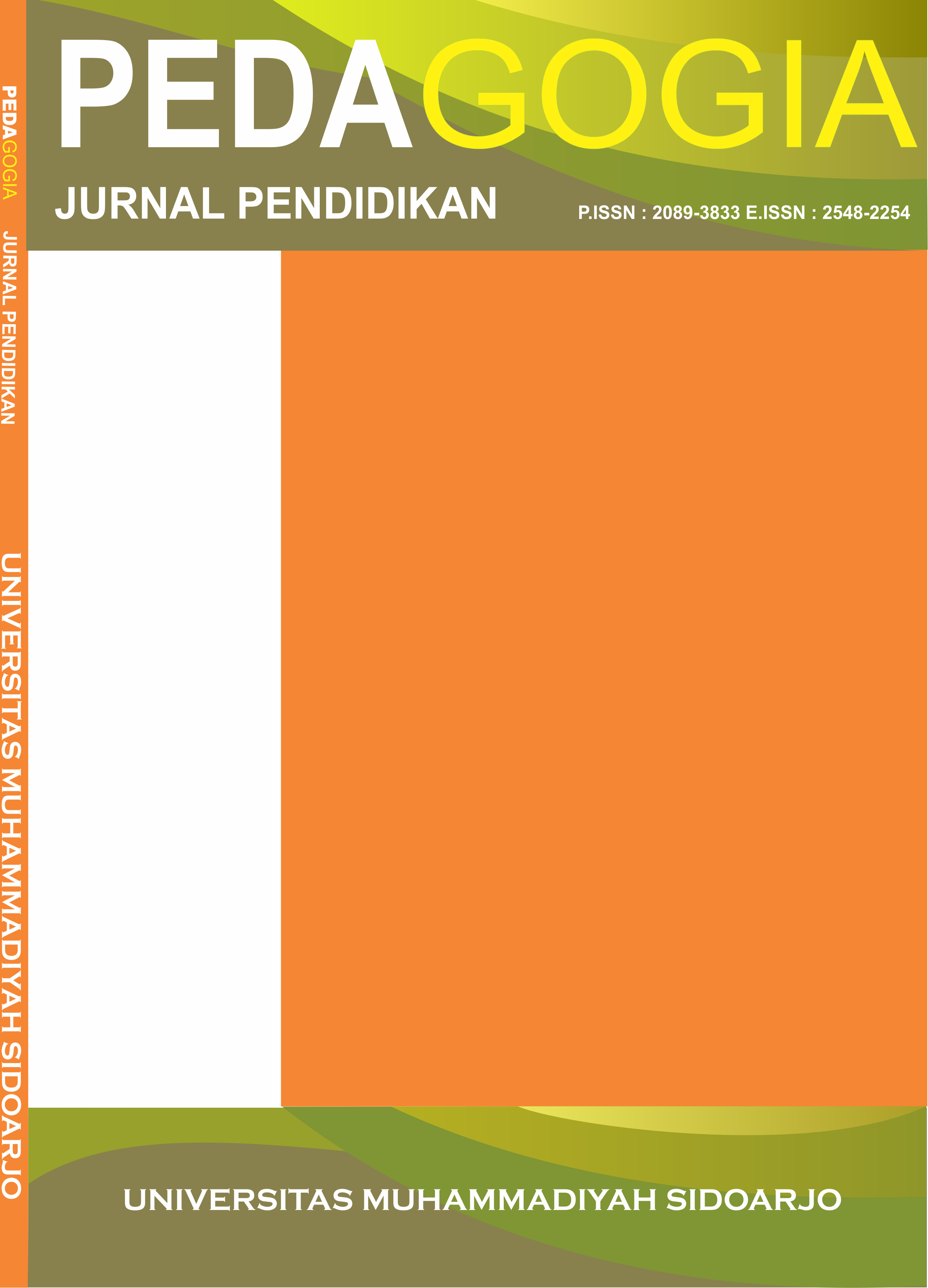Metode Montessori Berbantu Alat Peraga Matematika Berbahan Limbah Karet Spons untuk Mengembangkan Partisipasi Aktif Siswa SD
Montessori Method Assisted Math Tools Made from Rubber Sponge Waste for Developing Elementary Students Active Participation
DOI:
https://doi.org/10.21070/pedagogia.v8i1.1794Keywords:
Montessori-learning method, Mathematical props, Waste-rubber-sponge, Active-student participationAbstract
The purpose of this study is to determine the implementation of Montessori learning methods based on mathematical props made from sponge rubber waste in developing active participation of fifth grade elementary school students. This study uses descriptive qualitative research methods using instruments in form of observation sheets, interview sheets, questionnaire sheets, and documentation. The collected data is analyzed by triangulation. The results showed that Montessori learning based on mathematics teaching aids made from sponge rubber waste can develop active participation of fifth grade students. Active participation of fifth grade students looks better when teachers apply Montessori learning method. This can be seen from the increase in the average value of students' active participation at each meeting. At the first meeting the average value of active student participation was 66.67, the second meeting was 73.91 and the third meeting was 81.52. This study recommends implement the learning methods needed with interesting tools, so that it can increase students’ active participation.
References
Dahunsi (2014). Montessori Education in Nigeria. IOSR Jour- nal of Research & Method 2320, 2320–737
Faryardi, Q. (2007). The montessori paradigm of learning: So what?. Article. Acces on. Retrieved 31
Hayati, N. (2001). Analisis Faktor-faktor yang menye- babkan Kurangnya Partisipasi Mahasiswa Geografi dalam Kegiatan Berorganisasi. Skripsi
Jannah, W. N., Lusiyana, D., and Susilawati (2018). IbM Alat Peraga Matematika SD dari Pengolahan sampah karet san- dal di Kecamatan Klangenan. Jurnal WARTA LPM 21, 15– 23
Jones, S. J. (2017). Technology in the montessori Classroom: Teachers’. Beliefs and Technology Use. JoMR Spring Journal of montessori Research. Volume 3, 16–29
Lillard, A. S. (2012). Preschool children’s development in classic montessori, supplemented montessori, and con- ventional programs. Journal of School Psychology 50, 379– 401
Moedjiono, H. (2006). Proses Belajar Mengajar (Bandung: Remaja Rosdakarya)
Rittahudin, A. (2017). Adaptasi Metode montessori Seba- gai Metode Pembelajaran Pendidikan Jasmani di Taman Kanak-kanak dan Sekolah Dasar. Skripsi. Universitas Negeri
Sadiman, A. and al (2008). Media Pendidikan (Jakarta: PT. Grafindo Persada)
Sudjana, N. and Riva’i, A. (2009). Media Pengajaran (Ban- dung: Sinar Baru Algensindo)
Sugiyono (2014). Metode Penelitian Pendidikan (Bandung: Alfabeta)
Sundayana, R. (2014). Media dan Alat Peraga dalam Pembe- lajaran Matematika (Bandung: Alfabeta)
Wahyuningsih, I. (2011). Pengaruh Model Pendidikan montessori Terhadap Hasil Belajar Matematika Siswa. Skripsi. Universitas Islam Negeri
Yus, A. (2015). Model Pendidikan Anak Usia Dini (Jakarta: Prenadamedia Group)
Downloads
Published
How to Cite
Issue
Section
License
Authors retain copyright and grant the journal right of first publication with the work simultaneously licensed under a Creative Commons Attribution 4.0 International License that allows others to share the work with an acknowledgement of the work's authorship and initial publication in this journal.








